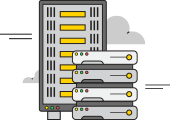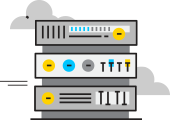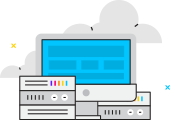Class-based programming, also known as class-oriented or object-oriented programming (OOP), is a popular paradigm in modern software development. It allows developers to structure their software around real-world entities, enabling code reusability, encapsulation, inheritance, and polymorphism.
The History and Emergence of Class-based Programming
The concept of class-based programming was first introduced by Norwegian computer scientists Ole-Johan Dahl and Kristen Nygaard in the 1960s with the development of the Simula language, which is considered the first object-oriented programming language. However, it wasn’t until the release of Smalltalk in the 1970s by the Xerox PARC team led by Alan Kay that class-based programming truly started to gain traction.
In the decades that followed, class-based programming became a staple of software engineering, with many of today’s most popular languages—including Java, C++, and Python—incorporating its principles.
Delving Into Class-based Programming
In class-based programming, a class is a blueprint or a template that describes the behaviors and states that objects of its type support. An object is an instance of a class. For instance, if you have a class called ‘Car’, objects of this class could be ‘Toyota’, ‘Honda’, etc. Each object can have unique attribute values but they all follow the structure defined by their class.
Key principles of class-based programming include:
-
Encapsulation: This is the bundling of data, and the methods that operate on this data, into a single unit known as an object.
-
Inheritance: This allows the creation of hierarchical classifications. If there is a class ‘Vehicle’, a class ‘Car’ could be derived from it, inheriting all its attributes and behaviors.
-
Polymorphism: This allows one interface to represent a general class of actions. It’s the ability of different objects to respond in a unique way to the same message.
-
Abstraction: This helps in reducing complexity by hiding irrelevant details and showing only necessary information.
The Inner Workings of Class-based Programming
Under the hood, classes define the structure of objects in memory, with each object containing its own copy of the class’s data fields. When a method is called on an object, the class’s corresponding method is executed with the object’s data fields as context.
Key Features of Class-based Programming
The key features of class-based programming are encapsulation, inheritance, polymorphism, and abstraction. They facilitate code organization, code reusability, data protection, and software maintenance. They also enable the development of complex software systems in a modular way, where each module can be developed and tested independently before being integrated with others.
Types of Class-based Programming
Class-based programming is found in a multitude of languages, each implementing the paradigm in slightly different ways. Some of these include:
| Programming Language | Notable Features |
|---|---|
| Java | Fully object-oriented, everything is an object except for primitive types |
| C++ | Combines object-oriented and procedural programming |
| Python | Supports multiple paradigms, including functional and procedural, in addition to class-based |
| Ruby | Everything is an object, even primitive types |
| C# | Developed by Microsoft, used extensively in .NET framework |
Using Class-based Programming: Problems and Solutions
Class-based programming is a powerful paradigm, but it does not come without its challenges. It requires careful design to avoid problems like tight coupling, large inheritance hierarchies, and classes with too many responsibilities. However, these can be mitigated by following design principles like the SOLID principles and using design patterns.
Comparisons with Similar Paradigms
While class-based programming is popular, there are other programming paradigms. For example, procedural programming organizes code into procedures, while functional programming avoids changing-state and mutable data.
| Programming Paradigm | Main Characteristics |
|---|---|
| Procedural | Programs are a series of procedures, or routines, that manipulate data |
| Class-based | Programs are a collection of interacting objects |
| Functional | Computation is treated as the evaluation of mathematical functions, avoids changing-state and mutable data |
The Future of Class-based Programming
Despite the rise of other paradigms like functional and reactive programming, class-based programming remains a crucial part of the programming landscape. Modern languages are tending towards multi-paradigm approaches, incorporating class-based alongside other paradigms.
Furthermore, class-based programming is being enhanced by newer concepts such as Aspect-Oriented Programming (AOP) which provides a way to modify the behavior of classes and objects dynamically.
Class-based Programming and Proxy Servers
Proxy servers can benefit greatly from class-based programming. In a proxy server system, different types of proxies—HTTP, SOCKS, etc.—can be represented as classes, inheriting from a base Proxy class. This allows for the creation of modular, easily extendable systems. The principles of encapsulation and polymorphism enable secure and flexible handling of data packets, respectively.
Related Links
For further reading and resources, check out the following links:
- Object-Oriented Programming Concepts: Oracle
- Object-Oriented Programming: Python Documentation
- Learn Object-Oriented Programming in C++
- Object-Oriented Programming in Java
- Object-Oriented Design Principles
From the dawn of Simula to the advanced, multi-paradigm languages of today, class-based programming has proved an enduring and versatile approach to coding. Its application to various facets of technology, including proxy servers, attests to its utility and adaptability in the face of ever-evolving computational challenges.




